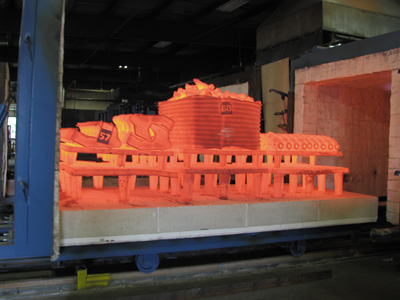
Applied to some, but not all, engineering steels, normalizing can soften, harden or stress relieve a material, depending on its initial state. The objective of the treatment is to counter the effects of prior processes, such as casting, forging, or rolling, by refining the existing non-uniform structure into one which enhances machinability/formability or, in certain product forms, meets final mechanical property requirements.
A primary purpose is to condition steel so that, after subsequent shaping, a component responds satisfactorily to a hardening operation (e.g. aiding dimensional stability).
Normalizing consists of heating suitable steel to a temperature typically in the range 830-950°C (at or above the hardening temperature of hardening steels, or above the carburizing temperature for carburizing steels) and then cooling in air. Heating is usually carried out in the air, so subsequent machining or surface finishing is required to remove scale or decarburized layers.
Air-hardening steels (e.g. some automotive gear steels) are often “tempered” (subcritical annealed) after normalizing to soften the structure and/or promote machinability. Many aircraft specifications also call for this combination of treatments. Steels that are not usually normalized are those which would harden significantly during air cooling (e.g. many tool steels), or those which gain no structural benefit or produce inappropriate structures or mechanical properties (e.g. the stainless steel).
